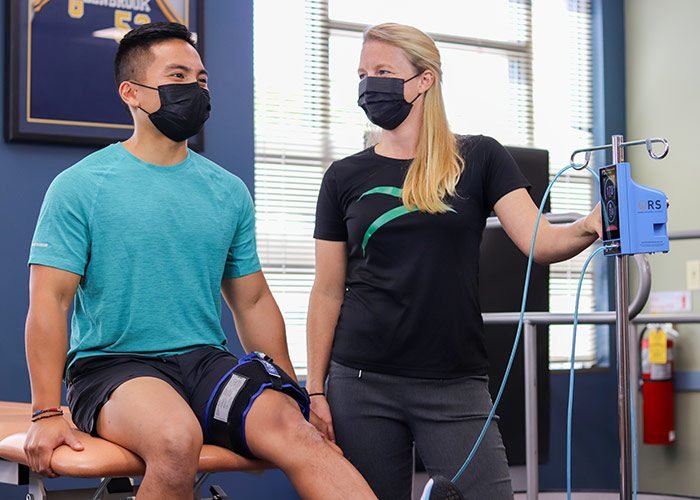If you have undergone surgery, you are suffering from muscular problems, or you find that you are unbalanced and weak on one side of your body, this can cause all sorts of problems for leading a healthy life. Even if you’re not an elite-level athlete, you want your body to be in the best physical condition possible. Although you might not be a gym rat, living pain-free and being able to remain mobile throughout the years is key to being active and happy as you get older.
So, what are the best physical therapy methods to ensure any long-lasting and nagging injuries get taken care of as soon as possible? How can you avoid any post-surgery complications and weaknesses that can arise from a lack of physical therapy? Let’s see one of the most effective therapeutic methods that can be easily incorporated into any patient’s physical therapy program.
We are talking about blood flow restriction – also known as BFR. BFR is a type of therapy method in which the user will use a specific type of cuff from Source Fitness that restricts blood flow to the working muscles. If you are sitting down and you are doing single leg flexion, then you can use the BFR cuff on the upper part of your quadricep to cut off the blood flow and make it harder for you to flex your leg. Even though you will feel this immediately and you will feel like you are strenuously working your muscle, you can get the same feel as you would with more intense exercise while doing low-impact and safer exercises.
This is why blood flow restriction is so good for those who are recovering from injuries or recovering from surgery – instead of doing high-intensity exercises and 30 reps of an exercise that can injure you, you can get the same benefits from doing around 5 reps of an exercise in a low-intensity setting. Since BFR restricts the blood flow to a particular muscle to a muscle group, you will get the same benefits of doing hundreds of reps or much more strain in less time and less effort.
A few steps of how to use blood flow reaction in your physical therapy program are as follows:
- Determine the point of pain or the weakness – if you have just had surgery on your hip, then you might consider using the blood flow cuff on your quadricep below the hip.
- Figure out the exercise to do – If you are trying to strengthen a specific muscle, such as the hamstrings, you can use the BFR cuff to then do single leg glute bridges so you can target the hamstring.
- Apply the BFR cuff – The third step of using BFR in your physical therapy regimen is applying the BFR cuff to the specific area. Once you have determined where to use the cuff, you can then put the cuff on your body and tighten it so it begins to cut off the blood flow supply.
- Do the exercise – The fourth step of using BR is that you do the actual exercise. Make sure you consult your physical therapist to see how many reps and sets you should do for the specific exercise.
- Rest and repeat – The last step of using BFR in your physical therapy regimen is to rest and then repeat as needed!
Conclusion
If you’re recovering from weakness, injury, or surgery, consider using BFR with your physical therapy regimen. This low-impact exercise is the best way to target a muscle group and get quick and long-lasting benefits!

